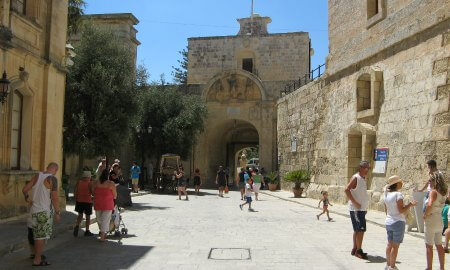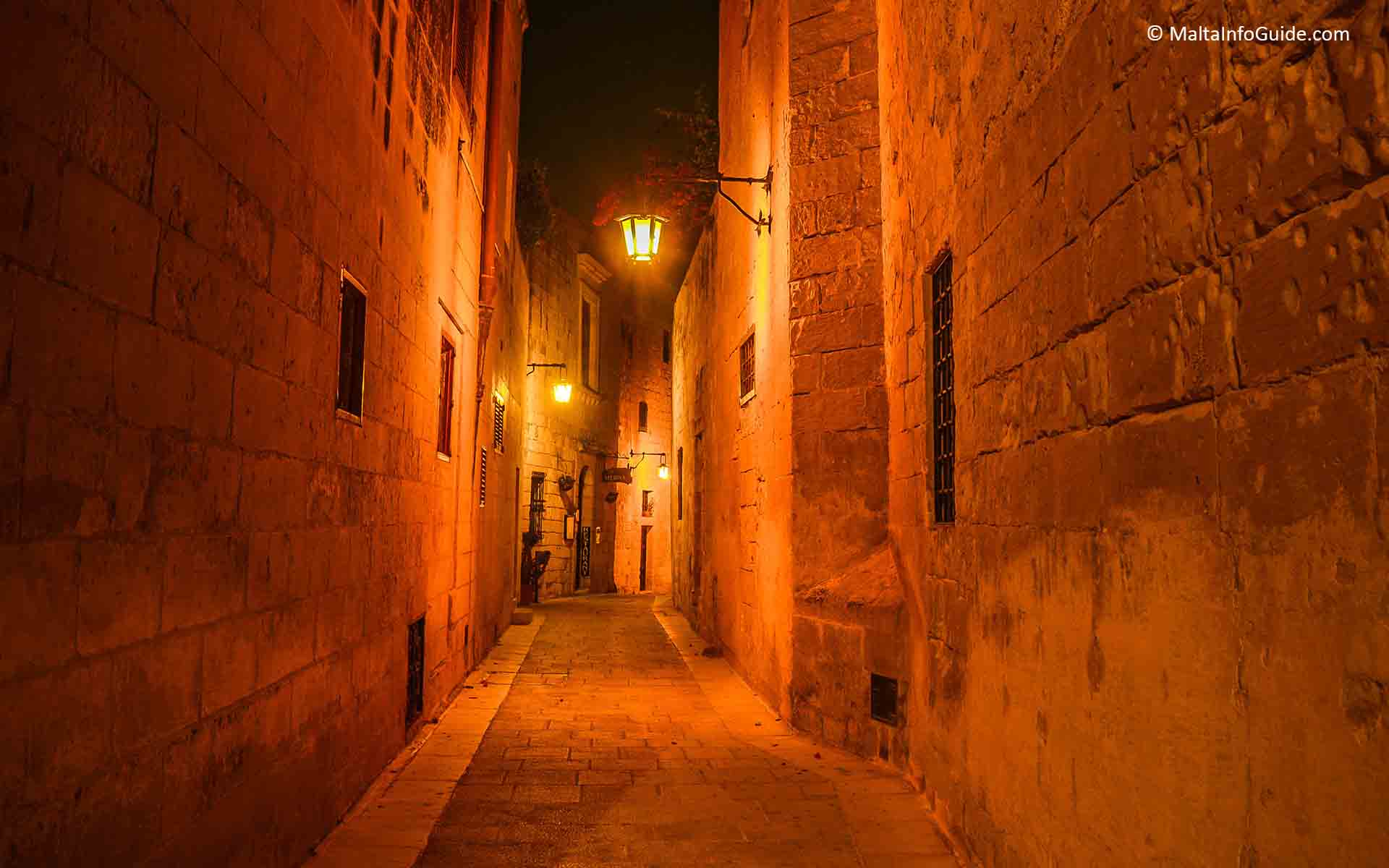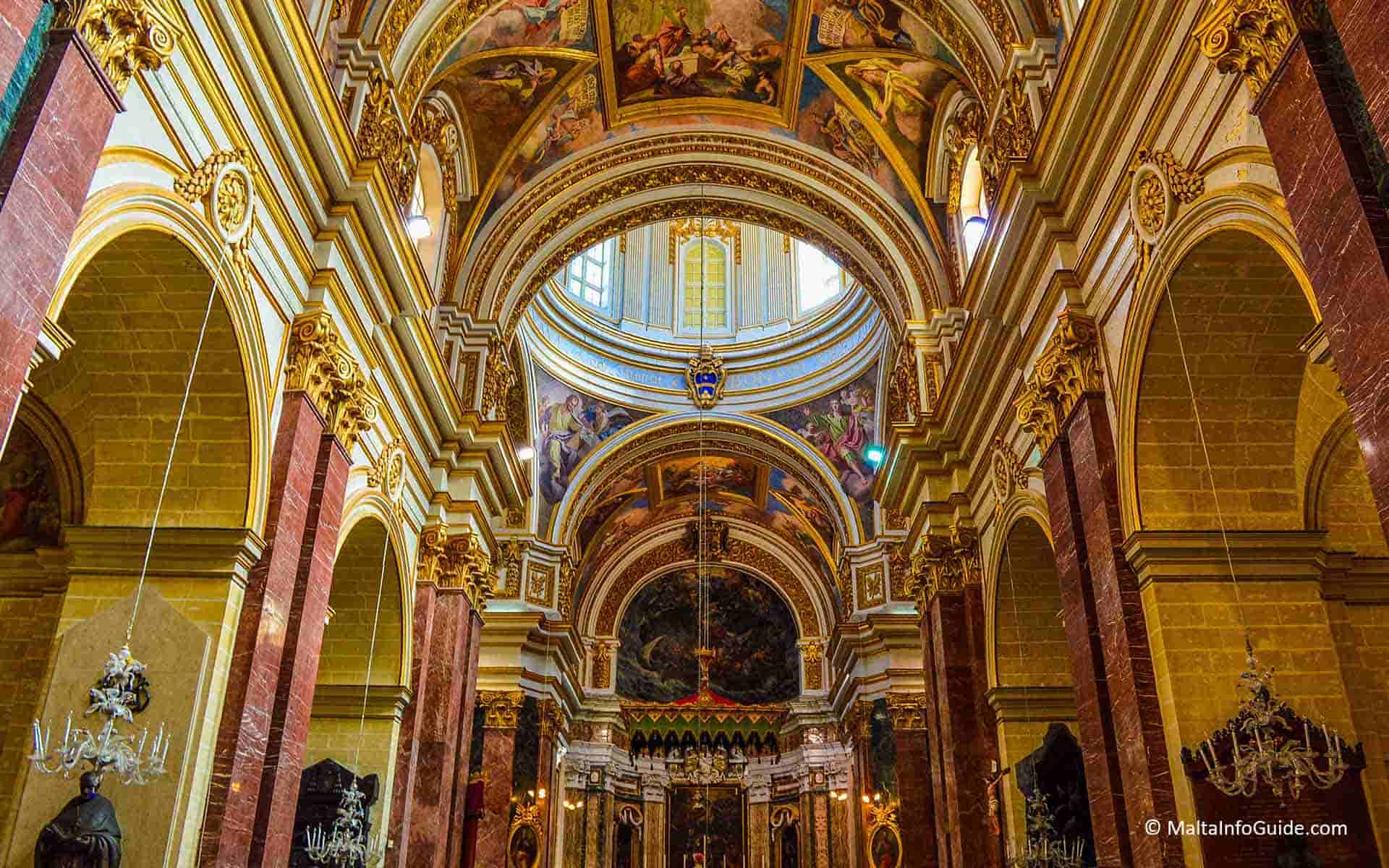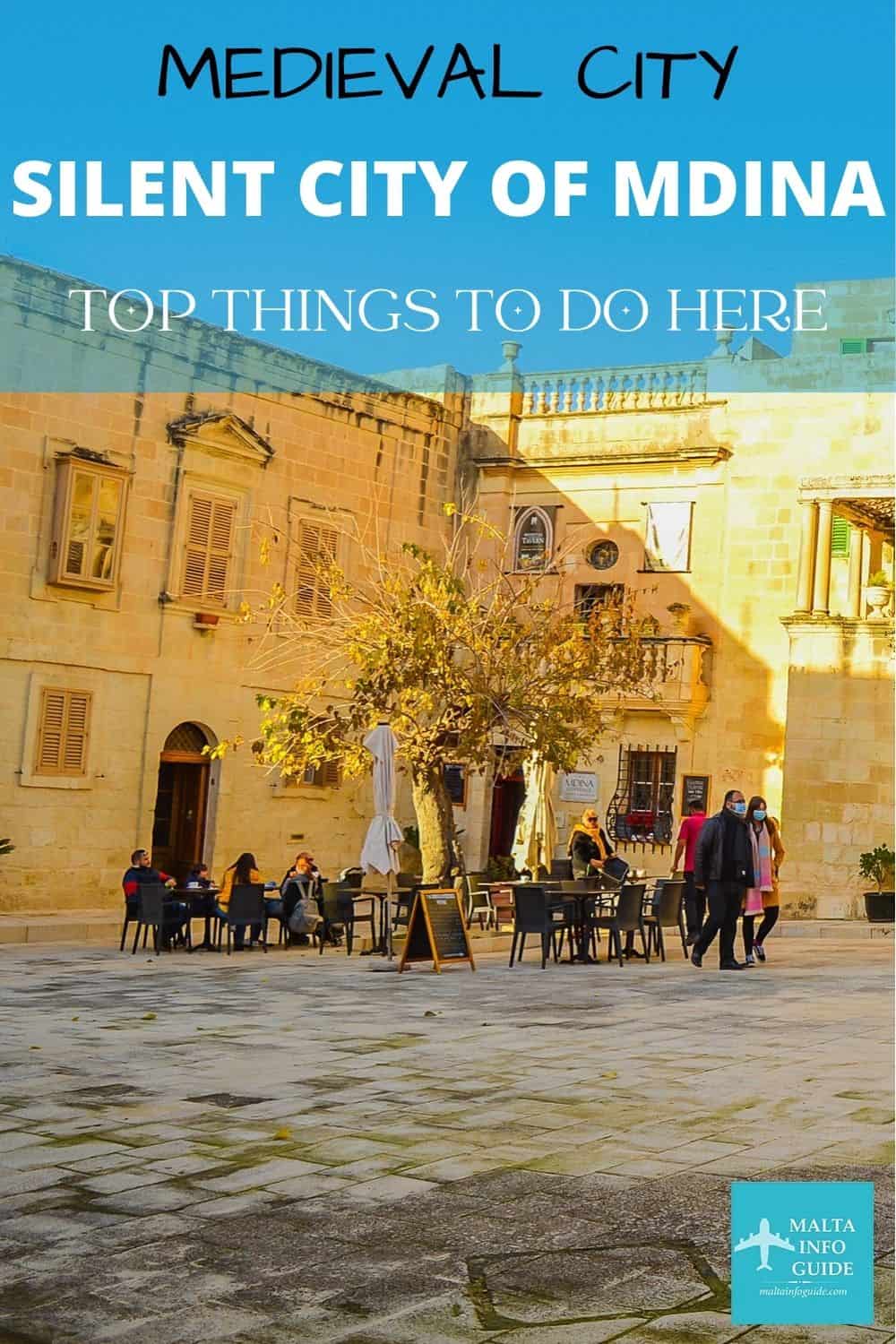- Home
- Mdina in Malta
- Mdina the Silent City
Mdina The Silent City
A Small City With So Much History
Mdina the silent city, is one of Europe’s finest ancient walled city. It is situated in the centre of the island of Malta at 200 metres above sea level. The city is a mixture of Baroque and medieval architecture and was the Capital city of Malta until the arrival of the Knights of Malta in 1530.
Historical Facts about Mdina in malta
- During 700 BC it was first fortified by the Phoenicians 700 years before Christ.
- Under the Phoenicians it was called 'Maleth' which means (the protected city).
- Under the Roman Empire the Roman Governor built his palace here.
- The layout of the city reflects the Fatinid Period which started during 870 AD.
- The oldest surviving buildings date back to the Norman period.
- The Normans increased the defences by thick walls and a wider moat. The city was seperated from the town of Rabat.
- Some are descendants of the Norman, Sicilian and Spanish overlords who settled in Mdina during the 12th century.
- Mdina was Malta's capital city, before Valletta was built.
- In those days the local governing organ was called the Universita’ which was governed until the arrival of the Knights of Malta.
- But yet with all the tourists that arrive during the day the serene atmosphere that surrounds the streets is still unique in comparison to all towns and villages of Malta.

Why Mdina Was Always The Most Significant Place In Malta
Medina is the name given by its former Arab rulers many centuries ago. It was the old capital city of Malta, built during the medieval period before Valletta existed. For 3000 years from the Bronze Age (1,500 - 500 BC).
Then the Phoenicians and the Byzantines made further changes and improvements to the fortifications and not the least the built up areas for people to live.
Then the ruling Arabs which further fortified the capital city until all other rulers until the arrival of the Knights of Malta. They too left their mark in building places and fortifications until Valletta was built and became the capital of Malta.
In the year 1530, Malta was handed over to the Knights of St. John. The swearing in of each of the Grand Masters who took over the reign of Malta was conducted in Mdina.
A strong earthquake in 1693 damaged many buildings especially the Cathedral. A new cathedral had to be build due to the amount of damage it had. So when certain buildings were restructured it was decided to rebuild them in the Baroque style.
The entrance which we find today is not the original one and was designed by Charles Francois de Mondion in 1724 for Grand Master of the Order of St. John, Manoel de Vilhena. When one is entering Mdina one is able to see the coat of arms of the Grand Master Manoel de Vilhena, representing his outstanding successes during his war.
The Grand Master had decided to enlarge the Vilhena palace and for this purpose he had to shift the position of the gate sideways. It is still visible today from the outside.

The Three Gates Of The Walled City
The Mdina fortifications have three gates. The main gate side and back doors.
First Gate - The Main Gate
The main gate was built during the reign of Grand Master Vilhena when he decided to enlarge the Vilhena Palace and for this purpose he had to shift the position of the main entrance gate sideways.
The old door position is still visible from the outside. Here there are three stone statues. St. Agatha, the patron saint, St. Paul who brought Christianity to Malta and St. Publius who was the Governor of the Island when St. Paul was shipwrecked. During that time a Maltese family named Inguanez used to govern and you can see the coat of arms on the city walls.
Second Gate - Greeks Gate
The second gate (at the side) the Greeks gate leading to St. Nicholas Square, which is the oldest of the three where a small Greek community used to live. During those times, slaves used to enter Mdina through this gate and not through the main one.
Third Gate
The third one at the back of the fortification walls and called Gharreqin. The British rule constructed
this gate within the walls with an outside ramp leading to the level of the road. It leads to the 19th century train station, which formed part of the train network. This was the last train station from where one could walk to Mtarfa, where British soldiers used to live in purposely built quarters.
What Can I do In Mdina
What can I do in Mdina? You can spend a whole day roaming around the city and exploring all possibilities of the city.
On the right side of the main gate just before the ‘Vilhena Palace’ there are the Mdina dungeons. They have been turned into one of the cultural attractions which also includes the ‘horror chambers’.
A complete restoration of the fortified walls has been underway. From cleaning, changing dilapidated stones. Strengthening the foundations due to structural weakness to save this precious medieval city to be enjoyed by all for many centuries to come.
Besides Mdina, on the outskirts of the walled fortifications, there is the Domvs Romana (Roman Villa). It is one of the main attractions for tourists in Malta. It offers a unique western Mediterranean experience to the oldest mosaic decorations of the period in relation to those found in Sicily.

Banca Giuratale
The Banca Giuratale also known as the Municipal Palace was purposely built between 1726 and 1728 to house the city’s administration council and courts.
The Grand Master António Manoel de Vilhena had taken over their original premises as he wished to build his own palace, which today we call it Vilhena Palace.
The Municipal Palace had various used as time passed by. During the French occupation 1798 it was the meeting place of the Maltese National Assembly.
Today it houses the court records from 1530 to 1899 forming part of the National Archives of Malta.
Archbishop Square
Archbishop Square is the main attraction point in the centre of Mdina with the plan of a large rectangular shaped square with the cathedral taking up one of the four sides.
During the 18th century Grand Master Antonio Manoel de Vilhena re-designed Mdina with the latest baroque style innovation of urban open spaces where old damaged buildings were demolished to make space for this square.
Walking through the main narrow road coming from the entrance gate you arrive immediately here surrounded by beautiful palaces.
Signal Tower Of The Standard - Torre Dello Standardo
On entering the main gate on the right side, you see the Torre dello Standardo. It is part of the main fortification walls and a communications tower. The Knights of St. John between 1725 and 1726 reconstructed it.
During the time of the French occupation between 1798 to 1800, the Maltese hoisted Neapolitan and Portuguese flags when the latter’s navy came over to assist.
During the British rule, they still used it as a signal tower. Now it is the tourist information office.
Want To Share This Page On Pinterest? Pin It Here!
want to rent a car in malta?
We have used Discover Cars every time we rented a car. We highly recommend them due to their good service and good prices.
Get The Best Rates On Your Car Rental Now!
need to book a hotel for your malta visit?
Using Booking.com, enter your travel dates and number of occupants then rates will be available for hotels and apartments during your visit to Malta
Book Your Hotel In Malta on Booking.com for the Best Rates!
 By Albert and Benjamin Magro
By Albert and Benjamin Magro


